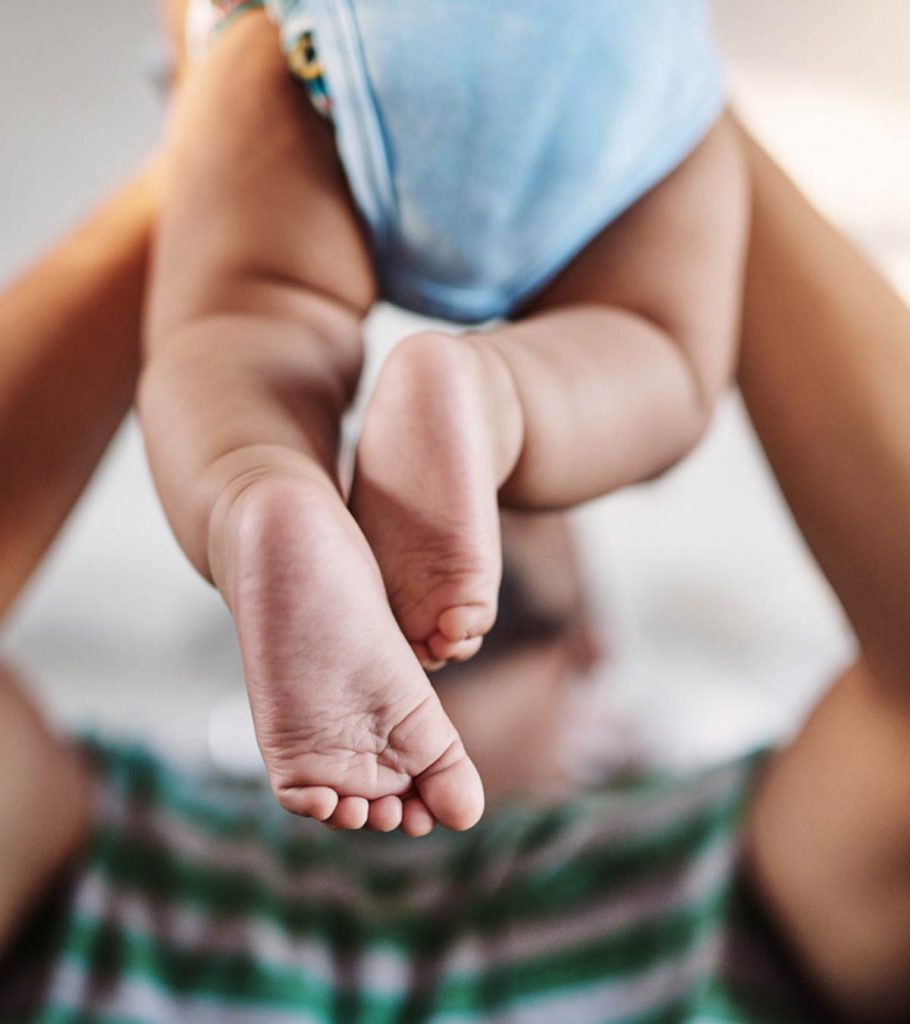Image: iStock
Parachute reflex is a primitive, postural reflex where a baby standing in an upright position, when lowered face down towards a flat surface, extends the arms outwards and spreads the fingers wide (just like a parachute) to prevent a fall.
For most full-term, healthy babies, this gross motor skill appears around five months of age, much before they begin to walk or crawl (1). However, it fully develops by the age of eight to nine months. A well-developed parachute reflex in babies is a crucial developmental milestone. If you have a young baby or expecting one soon, knowing about parachute reflex and some other essential reflexes can help track their development.
This post tells you why parachute reflex is vital for babies, how it is tested, and what if babies have multiple reflexes missing.
Why Do Infants Develop Parachute Reflex?
Parachute reflex is an involuntary reaction indicating healthy neuromotor development of an infant (2). Experts suggest that parachute reflex is vital to determine the baby’s ability to react to a stimulus (i.e., a falling position) and prevent injury due to falling.
During routine check-ups, especially around nine months, healthcare providers and doctors check for parachute reflex in babies to rule out hemiparesis (3). Hemiparesis is a neurological condition where muscle-weakening or paralysis occurs in one side of the body (4).
How To Test The Presence Of Parachute Reflex In An Infant?
Most pediatricians and healthcare providers check parachute reflex in healthy, full-term babies using the following steps (5).
- Hold the baby in an upright position by firmly gripping them from their chest. Ensure they are calm and alert.
- Raise the baby upwards and quickly but gently rotate them facing downwards as if they are falling.
- As the baby rotates, note their response. The baby should extend their arms forward and spread fingers to prevent a fall.
In most full-term babies, healthy babies, the reflex develops entirely by 12 months of age and then stays indefinitely.
Other Primitive Reflexes
There are some more essential reflexes that mark the healthy overall development of a baby (6).
- Rooting reflex: If you stroke a baby’s cheek or touch the corner of their mouth, they will turn their head towards that direction. This reflex allows the baby to locate the mother’s breast or a bottle and begin feeding. The reflex disappears by four months of age.
- Suck reflex: It is a survival reflex that manifests around the 32nd week of the pregnancy and fully develops by the 36th week. It prepares the baby to suck as soon as the mouth’s roof or palate is touched. Babies gradually fine-tune this reflex with the rooting reflex, letting them use this combination reflex to suck on the pacifier, hand, or fingers to self-soothe.
- Moro reflex: It appears in babies when they are just a few weeks old and then disappears by two months. In this reflex, the baby arches their back, throws out their arms and legs, rapidly brings their arms together, and cries in response to a sudden movement or loud noise. It is a startle response which is why the reflex is also known as the startle reflex.
- Tonic neck reflex: In this reflex, when a baby’s head turns to one side, the arm to that side straightens, and the opposite arm bends at the elbow as if the baby is fencing. It is the reason this reflex is also known as fencing posture, which abates once the baby is between five and seven months of age.
- Grasp reflex: It is an essential reflex wherein a stroke or a touch on the baby’s palm causes them to close their fingers, forming a fist. This reflex allows the baby to grasp things or objects. The reflex wanes once the baby is around five to six months old.
- Stepping reflex: Also known as dance or walking reflex, this reflex makes a baby step as if they are walking when held in an upright position and their sole touches a flat surface. The reflex disappears by two months of age and returns around 12 months as a voluntary action, called walking.
These reflexes together prepare your baby to survive in the world outside the mother’s womb and learn different skills to act voluntarily.
What If One Or More Reflexes Are Absent In A Baby?
Reflexes mark developmental milestones. As babies grow and develop at different rates, some delay may happen and is usually normal. However, a partial or complete absence of one or more reflexes could indicate an underlying neurological or motor growth and developmental issue.
For instance, a partial or complete absence of the sucking reflex may indicate brain damage and/or a syndrome that could affect the overall growth and development (7). Similarly, the presence of a reflex long after the time it should disappear indicates a brain or nervous system problem (8).
Parachute reflex is a protective, involuntary action essential for babies to develop. While the presence of parachute reflex lets a baby prevent fall, its absence indicates a neuromotor concern. If you suspect your baby has a partial or complete lack of one or more reflexes, consult a pediatrician promptly. A doctor will evaluate your baby, determine the precise cause, and suggest appropriate therapies and treatments.
